Ongoing projects for which we need support
DEVELOPMENT AND APPLICATION OF THE EPIMOLBIO SOFTWARE PROGRAM TO ANALYZE THE GENETIC VARIABILITY OF VIRUSES, PROTEINS, AND GENES OF BIOMEDICAL INTEREST


GOALS
- Development of the software EpiMolBio to analyze the genetic variability of viral sequences, pathogens, and genes or proteins of biomedical significance sourced from databases or clinical samples, aiding the scientific community in devising therapeutic or diagnostic strategies and conducting research.
- Investigation into amino acid variations within the structural and non-structural proteins of SARS-CoV-2 over time since the onset of the pandemic, categorized by country and continent.
- Examination of genetic variability within HIV-1 and HIV-2, alongside an analysis of resistance patterns to antiretroviral medications based on viral variants.
- Identification of specific genetic markers associated with each variant of HIV across various viral proteins, including those targeted by currently used antiretroviral medications.
- Detection of the most conserved regions within proteins of biomedical relevance, serving research, diagnostic, and therapeutic objectives.
SUPPORT REQUESTED
Required contract for 1 bioinformatician for 2025 and 2026 (€24,000/year, including employer contributions)
Annual cost of the domain for the website epimolbio.com.
LATEST ADVANCES
Our program EpiMolBio is already registered and completed. It is currently in the phase of error review and code reformulation for its publication on the website epimolbio.com.
The next step is its use for the analysis of genetic sequences of other viruses different from HIV and SARS-CoV-2, of microorganisms with longer genomes, and of human genes or proteins of biological or medical interest.
The program allows the automatic alignment of hundreds of thousands of amino acid and nucleotide sequences, performs polymorphism analysis, conservation analysis, homology analysis, identification and counting of mutations in a sequence alignment, detects and quantifies drug resistance mutations against HIV, and searches for specific regions within proteins, among other tools.
PRESENTATION OF RESEARCH AT CONFERENCES AND PUBLICATIONS
- 2022. Scientific publication: Evolution of SARS-CoV-2 in Spain during the first two years of the pandemic: circulating variants, amino acid conservation, and genetic variability in structural, non-structural, and accessory proteins
- 2022. Scientific publication: Genetic Diversity and Low Therapeutic Impact of Variant-Specific Markers in HIV-1 Pol Proteins
- 2022. Scientific publication: HIV transmembrane glycoprotein conserved domains and genetic markers across HIV-1 and HIV-2 variants
- 2022. Scientific publication: HIV capsid protein genetic diversity across HIV-1 variants and impact on new capsid-inhibitor Lenacapavir
- 2022. Posters at XIII CONGRESO NACIONAL DE GESIDA 2022. Poster P-029: Genetic diversity and Variant-specific markers in HIV-1 Pol proteins and impact in antirretroviral resistance. Poster P-030: HIV capsid protein genetic diversity across HIV-1 variants and impact on new capsid-inhibitor Lenacapavir
- 2022. Poster at CROI 2022: Main SARS-CoV-2 circulating variants in Spain during the first year of the pandemic.
- 2021. Scientific publication: Update in Natural Antiretroviral Resistance-Associated Mutations Among HIV Type 2 Variants and Discrepancies Across HIV Type 2 Resistance Interpretation Tools
- 2021. Scientific publication: Evolution of SARS-CoV-2 Envelope, Membrane, Nucleocapsid, and Spike Structural Proteins from the Beginning of the Pandemic to September 2020: A Global and Regional Approach by Epidemiological Week
- 2021. Poster at 2º Congreso Nacional Multidisciplinar Covid19 de las Sociedades Científicas de España:Variabilidad Genética Del SARS-CoV-2 En España.
- 2021. Oral Poster at IAS COVID-19 Conference: Prevention: Evolution of SARS-CoV-2 envelope, membrane, nucleocapsid and spike structural proteins from the beginning of the pandemic to September 2020: a global and regional approach by epidemiological week.
- 2020. Research presentation at 1º Congreso Nacional virtual COVID (SEIMC) and 30th European Congress of Clinical Microbiology and Infectious Diseases (ECCMID)
- 2019. Research presentation at XI Congreso Nacional de SIDA (GESIDA) and 10th IAS Conference on HIV Science (IAS)
COLLABORATING ENTITIES
- IRYCIS
- Fundación Familia Alonso
DEVELOPMENT AND EVALUATION OF NEW POINT-OF-CARE MOLECULAR DIAGNOSTIC METHODS BASED ON NANOTECHNOLOGY AND THE USE OF APTAMERS FOR EARLY HIV DIAGNOSIS WORLDWIDE
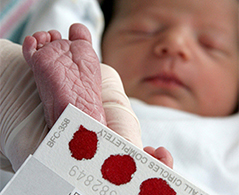


GOALS
- Develop new technologies for early molecular detection of HIV by detecting viral proteins, comparing them with the best point-of-care (POC) diagnostic techniques that detect HIV nucleic acids (molecular) or antibodies against the virus (serological).
- Develop and evaluate new POC diagnostic prototypes based on nanotechnology by coupling our aptamers to different types of biosensors for ultra-sensitive early diagnosis of HIV using different detection systems, to detect the virus from the first day of infection.
- Evaluate the impact of sample type (dry blood spots and/or plasma), viral variant, HIV infection stage, and patient age on the detection and/or quantification capacity of the new diagnostic prototypes based on apta-biosensors.
- Develop a bioinformatics tool to identify the best candidate aptamers after their selection and subsequent evaluation of the structural impact of possible modifications.
Aptamers are single-stranded oligonucleotides (RNA or DNA) or peptide molecules capable of binding to a target molecule with high specificity and affinity. They are an alternative to monoclonal antibodies, both in diagnostic and therapeutic contexts. Their advantage over antibodies lies in their simple and less costly production, their ability to be chemically modified to increase stability, and their ability to bind to any type of target, including non-immunogenic ones, unlike antibodies.
SUPPORT REQUESTED
Contract required for 1 research assistant for 2025 and 2026 (€27,000/year, including employer contributions).
LATEST ADVANCES
- Using silicon chips and plates and anti-HIV antibodies, we have successfully detected recombinant viral protein P24 through nanoplasmonic detection at the femtogram level (approximately 10 HIV viruses/ml of blood).
- We are currently evaluating its diagnostic efficacy against a panel of samples infected with different HIV variants.
- Subsequently, we will assess samples from patients with recent infection and with varying amounts of virus.
- The initial results were presented at the 2022 Conference on Retroviruses and Opportunistic Infections (CROI)
- In the future, depending on the data obtained, replacing antibodies with anti-HIV aptamers will be considered.
- Using a new bioinformatics program developed in the laboratory (EpiMolBio), we have analyzed several tens of thousands of sequences of different viral variants available in specialized databases. Subsequently, we have identified several highly conserved regions at the amino acid level within 5 viral proteins among more than 140 different HIV variants (types, groups, subtypes, sub-subtypes, circulating recombinants).
- We have selected various DNA aptamers that can bind to those conserved regions of HIV proteins due to their specific three-dimensional structure.
- We have characterized the sequence, structure, affinity, specificity, and sensitivity of the selected aptamers against these proteins of interest.
- We are currently finishing selecting the best combinations of aptamers to achieve greater sensitivity in HIV detection.
- Our aptamers are being incorporated into different types of biosensors, supports, and detection systems to obtain new POC diagnostic prototypes for ultrasensitive HIV detection.
- Next, we will proceed to evaluate their diagnostic efficacy against different types of samples from children and adults infected with different HIV variants, at different infection stages, and with different amounts of virus, as well as their potential for virus quantification.
Chips and silica plates
Aptamers
PRESENTATION OF RESEARCH AT CONFERENCES AND PUBLICATIONS
- 2023. Poster 'Impact of the addition of spacers on specific aptamers against HIV protease' at XVI CONGRESO NACIONAL DE GESIDA
- 2022. Poster P-091 'Characterization of aptamers for HIV-1 protease, integrase and p24 detection across HIV variants' at Spanish Conference on Biomedical Applications of Nanomaterials (SBAN)
- 2022. Poster P-140 'HIV Transmembrane Glycoprotein Conserved Domains and Genetic Markers Across HIV-1 and HIV-2 Variants' at XIII CONGRESO NACIONAL DE GESIDA
- 2022. Oral presentation 'Design and characterization of aptamers for early HIV diagnosis using new technologies' at I JORNADA DE INVESTIGACIÓN DE ESTUDIANTES DE DOCTORADO (JOINED)
- 2022. Scientific publication: HIV transmembrane glycoprotein conserved domains and genetic markers across HIV-1 and HIV-2 variants.
- 2022. Poster T03 on new diagnostic chip. Conference on Retroviruses and Opportunistic Infections (CROI)
- 2021. Poster P-102 on HIV-1 gp41 protein conserved regions at XII CONGRESO NACIONAL GESIDA
- 2021. Oral presentation on aptamers at XII CONGRESO NACIONAL GESIDA
- 2021. Oral presentation on diagnostic chip at XII CONGRESO NACIONAL GESIDA
COLLABORATING ENTITIES
- Laboratorio de Bionanomecánica del Instituto de Micro y Nanotecnología (IMN-CSIC)
- Unidad de Aptámeros del IRYCIS-Hospital Ramón y Cajal, Madrid.
- Empresa LincBiotech
- Laboratorio de Investigación en Nanobiotecnología para el Diagnóstico (Nb4D). Instituto de Química Avanzada de Cataluña - CSIC. Barcelona.
- Laboratorio de Trasductores Químicos del Instituto de Microelectrónica – CSIC. Barcelona.
- Instituto de Nanociencia y Materiales de Aragón – CSIC. Universidad de Zaragoza.
- Grupo de Investigación Materiales Nanoestructurados Bioactivos (MatNaBio).– Departamento de Química en Ciencias Farmacéuticas. Universidad Complutense de Madrid.
HIV DIAGNOSIS, DRUG RESISTANCE ANALYSIS, HIV VARIANTS, AND VACCINE PROTECTION IN THE INFECTED POPULATION OF EQUATORIAL GUINEA
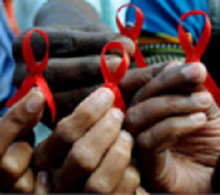


GOALS
- Confirmation of HIV diagnosis in children, adults, and pregnant women using dried blood spot samples.
- Quantification of the amount of virus in all infected patients to identify therapy failures.
- Identification of drug-resistant viruses in infected patients who have failed treatment, identifying alternative drugs for each patient infected with resistant viruses.
- Characterization of viral variants in the infected population studied in Equatorial Guinea.
- Studies on protection against vaccine-preventable pathogens in the pediatric population of Guinea.
- Regular transfer of results to local clinicians and the National AIDS Directorate of Equatorial Guinea.
INTERNATIONAL COOPERATION PROJECT.
Training of technical staff at the Regional Hospital of Bata (Equatorial Guinea) for the correct collection and storage of infected plasma and DBS samples in Guinea, and their transportation to Madrid at -20ºC.
Use of techniques not implemented in the country:
Epidemiological description of the study populations.
Regular transfer of results to local clinicians to improve patient follow-up and to the National AIDS Directorate of Equatorial Guinea to enhance HIV control in the country.
SUPPORT REQUESTED
Required contract for 1 biologist for 2025 and 2026 (€35,000/year, including employer contributions) and funds for reagents.
LATEST ADVANCES
- October 2023. The data analysis on diagnostic failures and diagnostic and therapeutic delays has been completed, and an article has been submitted to a high-impact international journal (awaiting resolution).
- November 2023. Transfer of results to the responsible parties of the National HIV/AIDS Control Program of MINSABS and a meeting to establish recommendations and improvement measures.
- December 2023. Transfer of results to the health authorities of MINSABS. Meeting date pending.
- January 2024. Completion of data analysis related to vaccine protection in our pediatric population group, with an article submitted to a high-impact international journal (awaiting resolution).
- 2024. Establishment of new steps in the EPIMOL-PNLVIH cooperation in Equatorial Guinea, including a training course on new diagnostic techniques for local healthcare personnel and a technical advisory visit to the new research center in Baney
- Scientific dissemination of the I Conference on National Programs for Disease Control in Equatorial Guinea.
- Scientific dissemination in specialized and general press, and at multiple national and international scientific congresses.
- Scientific dissemination: Researchers from CIBERESP study HIV antiretroviral resistance in Equatorial Guinea
PRESENTATION OF RESEARCH AT CONFERENCES AND PUBLICATIONS
- 2023. Scientific publication: High Drug Resistance Levels Compromise the Control of HIV Infection in Pediatric and Adult Populations in Bata, Equatorial Guinea.
- 2022. Poster at XIII Congreso Nacional GeSIDA 'Immunity against six vaccine-preventable pathogens in HIV+ and HIV- pediatric population of the city of Bata, Equatorial Guinea'.
- 2022. Poster at AIDS Congress 'High drug resistance levels compromise the control of HIV infection in paediatric and adult populations in Bata, Equatorial Guinea'.
- 2021. Oral presentation at XII Congreso Nacional GeSIDA 'The high level of antiretroviral resistance could compromise the control of HIV infection in the pediatric and adult population of Equatorial Guinea'.
- 2016. Scientific publication: Early diagnosis of human immunodeficiency virus-1 in infants: The prevention of mother-to-child transmission program in Equatorial Guinea.
- 2016. Scientific publication: HIV-1 Variants and Drug Resistance in Pregnant Women from Bata (Equatorial Guinea): 2012-2013.
- 2015. Scientific publication: HIV-1 infection using dried blood spots can be confirmed by Bio-Rad Geenius™ HIV 1/2 confirmatory assay.
- 2015. Scientific publication: HIV-1 variability and viral load technique could lead to false positive HIV-1 detection and to erroneous viral quantification in infected specimens.
- 2013. Scientific publication: Description of HIV-1 group M molecular epidemiology and drug resistance prevalence in Equatorial Guinea from migrants in Spain.
CYTED-PLANTAIDS PROJECT: PEDIATRIC NETWORK FOR PREVENTION, EARLY DETECTION, AND TREATMENT OF HIV IN CHILDREN
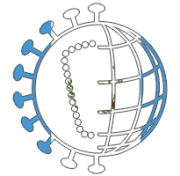

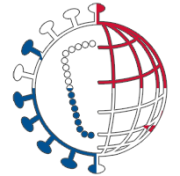
GOALS
- Project in Guatemala: Surveillance of antiretroviral resistance against HIV in children and adolescents infected and under follow-up at Roosevelt Hospital, Guatemala. Ongoing project since 2023
- Project in Mexico: Immune impact of HIV exposure and infection in children in Mexico and training of local medical personnel in interpreting resistance and susceptibility tests for antiretrovirals in patients with therapeutic failure. Ongoing project since 2022.
- Project in Panama: Surveillance of antiretroviral resistance and HIV variants in infected children and adolescents, with and without antiretroviral treatment. Project completed.
- Study on diagnostic and monitoring techniques for HIV infection in pediatric patients from reference centers in 8 Latin American countries (Costa Rica, Guatemala, Honduras, El Salvador, Mexico, Nicaragua, Ecuador, and Panama). Poster 184 of the GESIDA 2019 Congress.
EpiMolVIH collaborates with the CYTED-PLANTAIDS network since its beginning in 2018 through various projects. The network involves 9 Latin American countries: Costa Rica, Ecuador, El Salvador, Guatemala, Honduras, Mexico, Nicaragua, Panama, and Venezuela. This network collaborates with the National Pediatric HIV Network (CoRISpe) of Spain. It is also supported by the French institute INSERM, the Italian-Latin American institute ILLA, and the Spanish National AIDS Plan. Similarly, it collaborates with the PENTA Network.
We have participated in:
LATEST ADVANCES
- Guatemala Project: Visit of Epimol and PLANTAIDS members in Spain to Roosevelt Hospital to identify needs. Obtaining a scholarship for the stay of a Spanish doctor for 3 months at Roosevelt Hospital to support the hospital. Funding, design, and planning of the study, currently in the process of approval by the Ethics Committee of Guatemala. Selection of retrospective viral sequences from children with HIV in therapeutic failure.
- Mexico Project: Funding, design, and planning of the study already approved by the Ethics Committee. Collection of paired plasma/DBS samples from 120 patients and obtaining permits for sample transportation. Measurement of plasma levels and mRNA expression of immune markers in study has begun.
- 2022: Completion of the Panama Project: The project has analyzed the epidemiological situation of the pediatric and adolescent population living with HIV in Panama, detecting therapeutic failures and delays, antiretroviral drug resistance against HIV, and viral variants in children and adolescents in the country.
PRESENTATION OF RESEARCH AT CONFERENCES AND PUBLICATIONS
- 2022. Scientific publication: Drug resistance in children and adolescents with HIV in Panama.
- 2022. Poster at 24th International AIDS Conference. Drug resistance in children with HIV in the Democratic Republic of Congo, Equatorial Guinea and Panama. Ventosa Cubillo J, Rodríguez Galet A, Rubio M, Valadés A, Reina G, Ndarabu A, Pinzón R, Estripeaut D, Navarro ML, Bendomo V, Eyene M, Mikue-Owono T, Nzang J, Ncogo P, Benito A, and Holguín A
COLLABORATING ENTITIES
- Guatemala: CYTED-PLANTAIDS y Asociación Bomberos Ayudan.
- Mexico: CYTED-PLANTAIDS, SEPLA-AYUDA y la Fundacion para la Investigacion Biomedica HGUGM (proyecto 2021-II-PI-COOP-01).
- Panamá: CYTED-PLANTAIDS
Finished projects
EVALUATION AND OPTIMIZATION OF THE USE OF DRIED BLOOD SPOTS (DBS) AS AN ALTERNATIVE SAMPLE TO SERUM/PLASMA FOR THE DETECTION AND QUANTIFICATION OF ANTIGENS AND ANTIBODIES

GOALS
- Evaluate vaccine protection against vaccine-preventable pathogens (measles, rubella, mumps, tetanus, diphtheria, and pertussis) using DBS. Identify the optimal cut-off that provides maximum specificity and/or sensitivity for detecting protective antibodies against each in this type of sample.
- Standardize the diagnosis and monitoring of infection by different pathogens (HIV, HCV, T. cruzi) in dried blood samples collected on special filter paper (DBS), by comparing them with serum or plasma samples.
- Compare the quantification values of HIV and HCV nucleic acids in viremic patients using dried blood samples vs. those obtained in plasma samples.
- Establish the maximum conservation time of DBS at room temperature that allows serological and molecular detection of HCV, evaluating the pattern of antibodies observed in each sample at different times (sampling, 6 months, and 12 months).
- Establish the optimal cut-off for the detection of antibodies or antigens in DBS in each serological or molecular technique used.
- Evaluate the use of DBS in the detection and quantification of different immune markers for monitoring immune response.
LATEST ADVANCES
- Scientific dissemination in specialized and general press, and at multiple national and international scientific congresses.
- Multiple scientific publications since 2011 validating the use of DBS for molecular/serological diagnosis, and quantification of HIV by various techniques, as well as for resistance monitoring and viral variant characterization.
- Currently, viral load comparison of HCV in plasma vs. DBS has been achieved, and the evaluation of HIV core antigen detection in serum vs. DBS is underway. This sensitive marker allows for early disease diagnosis in the absence of molecular tests.
PRESENTATION OF RESEARCH AT CONFERENCES AND PUBLICATIONS
- 2023. Scientific publication: Impact of storage time in dried blood samples (DBS) and dried plasma samples (DPS) for point-of-care hepatitis C virus (HCV) RNA quantification and HCV core antigen detection.
- 2023. Scientific publication: Effect of the Hematocrit and Storage Temperature of Dried Blood Samples in the Serological Study of Mumps, Measles and Rubella.
- 2022. Scientific publication: Immune surveillance for six vaccinable pathogens using paired plasma and dried blood spots in HIV infected and uninfected children in Kinshasa.
- 2021. Scientific publication: HIV-1 diagnosis using dried blood spots from patients in Kinshasa, DRC: a tool to detect misdiagnosis and achieve World Health Organization 2030 targets.
- 2021. Scientific publication: HCV Diagnosis and Sequencing Using Dried Blood Spots from Patients in Kinshasa (DRC): A Tool to Achieve WHO 2030 Targets.
- 2021. Scientific publication: Dried Blood Specimens as an Alternative Specimen for Immune Response Monitoring During HIV Infection: A Proof of Concept and Simple Method in a Pediatric Cohort.
- 2021. Scientific publication: High drug resistance levels could compromise the control of HIV infection in paediatric and adolescent population in Kinshasa, the Democratic Republic of Congo.
- 2020. Scientific publication: Soluble PD-L1: a potential immune marker for HIV-1 infection and virological failure.
- 2019. Scientific publication: Utility Of POC Xpert HIV-1 Tests For Detection-Quantification Of Complex HIV Recombinants Using Dried Blood Spots From Kinshasa, D. R. Congo.
- 2017. Scientific publication: Evaluation of four commercial virological assays for early infant HIV-1 diagnosis using dried blood specimens.
- 2016. Scientific publication: HIV-1 Variants and Drug Resistance in Pregnant Women from Bata (Equatorial Guinea): 2012-2013.
- 2015. Scientific publication: HIV-1 variability and viral load technique could lead to false positive HIV-1 detection and to erroneous viral quantification in infected specimens.
- 2015. Scientific publication: HIV-1 infection using dried blood spots can be confirmed by Bio-Rad Geenius™ HIV 1/2 confirmatory assay.
- 2013. Scientific publication: Dried blood as an alternative to plasma or serum for Trypanosoma cruzi IgG detection in screening programs
- 2013. Scientific publication: [Dried blood spots for monitoring HIV infection in Public Health Programs in developing countries].
- 2013. Scientific publication: HIV-1 drug resistance prevalence, drug susceptibility and variant characterization in the Jacobi Medical Center paediatric cohort, Bronx, NY, USA.
- 2013. Scientific publication: Transmitted drug-resistance in human immunodeficiency virus-infected adult population in El Salvador, Central America.
- 2013. Scientific publication: Drug resistance prevalence in human immunodeficiency virus type 1 infected pediatric populations in Honduras and El Salvador during 1989-2009
COLLABORATING ENTITIES
- DRC samples: Clínica Universidad de Navarra
- Spain samples: Servicio de Microbiología y de Gastroenterología del Hospital Universitario Ramón y Cajal, IdIPaz-Hospital Universitario La Paz (Madrid)
- Equatorial Guinea samples: Centro Nacional de Medicina Tropical-ISCIII, Programa Nacional de lucha contra el VIH/SIDA del Ministerio de Sanidad y Bienestar Social de Guinea Ecuatorial
- Uganda samples: Med Biotech Laboratories, Kampala, Uganda y National NTD Program, Ministry of Health, Kampala, Uganda
- Mexico samples: Hospital Infantil de México Federico Gómez, Ciudad de México
EARLY DIAGNOSIS, RESISTANCE ANALYSIS, AND VIROLOGICAL STUDY OF HIV IN PEDIATRIC POPULATION OF KINSHASA (D. R. CONGO)
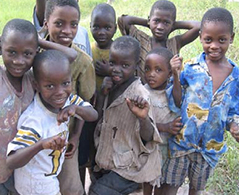


GOALS
- INTERNATIONAL COOPERATION PROJECT.
- Training of technical staff at Monkole Hospital for proper sample collection and transportation at -20ºC from the Democratic Republic of Congo (DRC) of children to Madrid.
- Early diagnosis of HIV in children born to mothers infected with the virus using dried blood samples.
- Quantification of the virus load in all infected children and evaluation of different techniques to identify the best method for quantifying virus variants circulating in the DRC.
- Identification of drug-resistant viruses in children and detection of treatment failures.
- Epidemiological description and characterization of viral variants in the pediatric, adolescent, and adult population since the beginning of the epidemic in the DRC.
- Studies of inflammation markers using dried blood samples.
- Evaluation of the effectiveness of different molecular techniques used for infection monitoring.
- Studies of protection against vaccine-preventable pathogens in the pediatric population of Kinshasa.
- Transfer of results to local clinicians to improve diagnosis, therapeutic regimen, and clinical follow-up of study patients.
LATEST ADVANCES
- Collaboration with the University of Navarra Clinic for the analysis of samples from infected adults in Kinshasa.
- Collaboration with the Biomedical Research Institute of La Paz Hospital (IdiPaz) for the analysis of inflammation markers.
- Communication of drug resistance results to pediatricians at Monkole and Kalembelembe Hospitals (Kinshasa, DRC) to optimize the clinical follow-up and therapy of each patient.
- Presentation of results at National Congresses from 2018-2021 (GeSIDA 2018-2021, GEHEP 2019-2021, SEIMC 2019-2021, SEE, CIBERESP Scientific Day 2021) and international conferences (AIDS 2020, CROI 2018, and 10th IAS Conference on HIV Science -IAS).
- Dissemination of results in specialized and general press.
- OUR WORK ON DRUG-RESISTANT VIRUSES IN CHILDREN WITH HIV IN CONGO
- OUR WORK ON VARIANT STRAINS CIRCULATING IN CONGO
PRESENTATION OF RESEARCH AT CONFERENCES AND PUBLICATIONS
- 2022. Scientific publication: Immune surveillance for six vaccinable pathogens using paired plasma and dried blood spots in HIV infected and uninfected children in Kinshasa
- 2022. Scientific publication: High drug resistance levels could compromise the control of HIV infection in paediatric and adolescent population in Kinshasa, the Democratic Republic of Congo.
- 2021. Scientific publication: Dried Blood Specimens as alternative specimen for immune response monitoring during HIV infection: a proof of concept and simple method in a paediatric cohort.
- 2021. Scientific publication: HCV diagnosis and sequencing using dried blood spots from patients in Kinshasa (DRC). A tool to achieve WHO 2030 targets.
- 2021. Scientific publication: HIV-1 diagnosis using dried blood spots from patients in Kinshasa, DRC: a tool to detect misdiagnosis and achieve World Health Organization 2030 targets.
- 2021. Scientific publication: High drug resistance levels could compromise the control of HIV infection in paediatric and adolescent population in Kinshasa, the Democratic Republic of Congo
- 2020. Scientific publication: Current and historic HIV-1 molecular epidemiology in paediatric and adult population from Kinshasa in the Democratic Republic of Congo
- 2019. Research presentation at SEIMC 2019y 10th IAS Conference on HIV Science (IAS)
- 2019. Scientific publication: Utility Of POC Xpert HIV-1 Tests For Detection-Quantification Of Complex HIV Recombinants Using Dried Blood Spots From Kinshasa, D. R. Congo
COLLABORATING ENTITIES
- Clínica Universidad de Navarra y Universidad de Navarra
- Hospital Monkole y Kalembelembe
OTHER PROJECTS IN LATIN AMERICA
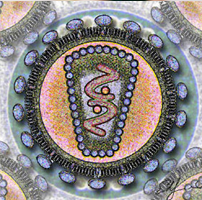


GOALS
- Project in Honduras: Viral variants and resistances in the pediatric population infected with HIV-1 at the Dr. Mario Catarino Rivas Hospital in San Pedro Sula, Honduras.
- Projects in El Salvador:
Study 1: Primary resistance of HIV-1 in El Salvador.
Study 2: Viral variants and resistances in the pediatric population infected with HIV-1 in El Salvador. - Training of technical and medical personnel from various Latin American countries through rotations in the laboratory and specialized training courses in the field of HIV, including diagnostic techniques and antiretroviral resistance.
LATEST ADVANCES
- 2012: Completion of the Honduras project. In this study, HIV variants, antiretroviral-resistant viruses, and mutations to each family of antiviral drugs were identified in children living with HIV in Honduras, both those who had never received therapy and those who were in therapeutic failure.
- 2012: Completion of the El Salvador project. This study describes for the first time the prevalence of resistance mutations to different families of antiretroviral drugs in adults and children infected with HIV in El Salvador before receiving their first antiretroviral therapy.
- 2011: Technical advice on the implementation of the first national laboratory for the identification of antiretroviral resistance in El Salvador following WHO guidelines and with support from the Global Fund. Advice on the different genotyping methods of commercial and non-commercial resistances (Abbott and Siemens vs. WHO method).
- 2019-2022: Rotation in our laboratory of a technical graduate from the Hospital del Niño Dr. José Renán Esquivel (Panama) for training in research on antiretroviral resistance against HIV.
- 2011: Training of two technical graduates selected by the national program of STIs/HIV/AIDS of the Ministry of Health of El Salvador and transfer of technology for the implementation of resistance detection to antiretrovirals in El Salvador using dried blood and following WHO guidelines.
- 2008-present: Training on HIV for Latin American clinicians in 14 editions of the Online Master's Degree "HIV INFECTION". Organized by the Ministry of Health, Social Services, and Equality and the Rey Juan Carlos University, Madrid. Part of the Esther-Spain project organized and coordinated by the National AIDS Plan for the technical training of HIV-1 infection professionals from Latin America and Spain. Chapters taught by África Holguín: HIV Virology; HIV Diagnosis and Molecular Epidemiology of HIV. Supervision of 11 master's theses until 2022.
PRESENTATION OF RESEARCH AT CONFERENCES AND PUBLICATIONS
- 2013. Scientific publication: Transmitted drug-resistance in human immunodeficiency virus-infected adult population in El Salvador, Central America.
- 2011. Scientific publication: . Drug resistance prevalence in human immunodeficiency virus type 1 infected pediatric populations in Honduras and El Salvador during 1989-2009.
- 2016. Poster at the 34th Annual Meeting of the European Society for Paediatric Infectious Diseases, ESPID. International Cooperation For Training In Pediatric Infectious Diseases In Resource Limited Settings: The Esther-Spain Project Esp16-0745. T. Sainz , M.L. Navarro , J.T. Ramos , P. Rojo , A Noguera , L. Prieto , J. Couceiro , D. Moreno , L. Escosa , A. Holguin , R. Polo, M.J. Mellado.
- 2013. Poster at V Congreso Nacional GeSIDA. Resistencia transmitida a antirretrovirales en población adulta infectada por el VIH en El Salvador, Centroamérica.Á Holguín, G Yebra, L Martín, A T de Pineda, L Ruiz, A Quezada, A I. Nieto, G Escobar.
- 2011. Oral communication at XIV Congreso Nacional sobre el SIDA. Campus Esther: Solidarity Master on HIV. A.Holguín.
COLLABORATING ENTITIES
- El Salvador: Project endorsed by the Ministry of Public Health and Social Assistance and Global Fund/MSPAS RCC: HIV/AIDS combat strategy in vulnerable populations as a support to poverty reduction in El Salvador 2009-2014
- Honduras: Project supported by the Spanish National AIDS Plan within the framework of the Esther Project (Union for Therapeutic Hospital Solidarity in Network) and the Spanish Agency for International Cooperation.

